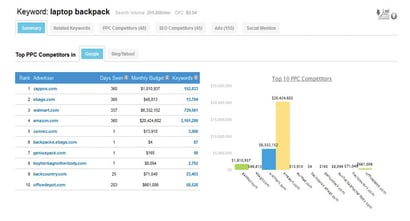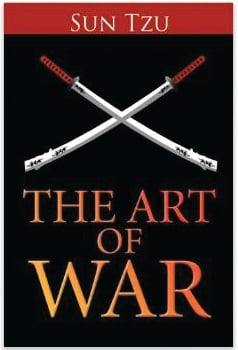Know Your Enemy

By Jamie Smith, Co-founder of Engine Ready & acting VP of Growth for iSpionage
When brands start marketing online (where the competition is fierce but easier to measure and generally less expensive than traditional advertising), the aim is to achieve profitability quickly and maintain it. One way to shorten the time to profitability is through competitive intelligence.
Competitive intelligence tools aggregate PPC and SEO data, enabling brands to closely examine industry categories or specific competitors. These powerful systems "allow" advertisers to evaluate how much the competition is spending, which keywords they are using, their ad copy variations, SEO terms they are ranking for, as well as the landing pages and offers being used. With the click of a button, advertisers can download a complete list of the keywords and sort them to find which are the most effective and which have the highest search volume. This allows advertisers (and agencies) to create profitable campaigns faster since they don't have to start from scratch or spend their entire budget trying to find the best keywords and ads. Let's take a closer look at the specific benefits.
In the Art of War, Sun Tzu tells us to "Know the Enemy" - which just so happens to apply in the world of marketing too. To win the war against the competition, and gain an unfair advantage, brands should start using competitive intelligence. #1: Competitive Keyword Research
Advertisers can search competitive intelligence databases by keyword to see what brands are bidding. As seen in Image A (using competitive intelligence tool iSpionage for the keyword "laptop backpack") we can see there are 48 advertisers and 155 ads. Gaining access to keywords the competition is using helps advertisers find additional terms and phrases for their own campaigns. It is also possible to quickly learn who the top competitors are and how much they're spending per month on paid search ads.

Image A
#2: Ad Copy Research
Advertisers only have two to three seconds to capture the attention of a searcher with a compelling offer. Using ad copy research, advertisers can discover what ads competitors are using, sorting them by AEI (Ad Effectiveness Index) "with" a competitive intelligence tool like iSpionage. Instead of clicking through Google results one by one, advertisers can access and review competitors' ads in one place and learn how they can write ads that stand out. Writing ad copy that gets a higher click-through-rate will improve campaigns' Quality Score.
#3: Landing Page Research
With landing page research, available in most competitive intelligence tools, advertisers can also discover
how their competitors are making their offer unique. And with more insights into competitors' strategy, brands have a greater ability to optimize their own pages. If a competitor is investing heavily in conversion rate optimization, brands can even piggy-back off of what they've learned and apply the lessons to their campaign.
#4: Competitor Alerts
The competitor alert features of these tools also automatically notify advertisers when key competitors make a change to their campaigns. If they add PPC keywords, use new ad copy or rank for new SEO terms, you'll be the first to know. This is really helpful for holiday promotions, as you can make sure to match or beat the offer presented by your competition. Points one through three are useful for creating new profitable campaigns faster, but competitor alerts help to make sure campaigns stays profitable over the long term.
#5: Keyword Monitoring
Guarding your most profitable keywords with daily monitoring is one of the most valuable features of competitive intelligence tools. Advertisers save time monitoring core keywords with these systems which allow them to sit back and wait for an alert. Once there's a change, like a new advertiser or a significant campaign change to their strategy for the keywords being watched, users get notified by email. This enables brands to know when a competitor runs a new special offer or increases their spending for key terms.
Digital advertising is extremely competitive. Smaller advertisers must compete with big advertisers so any advantage you can get is worth leveraging. For only a few dollars per day, competitive intelligence provides visibility into what's working for the competition so you can get an even better return on your campaigns investment.

Subscribe to Our Newsletter!
Latest in Marketing









